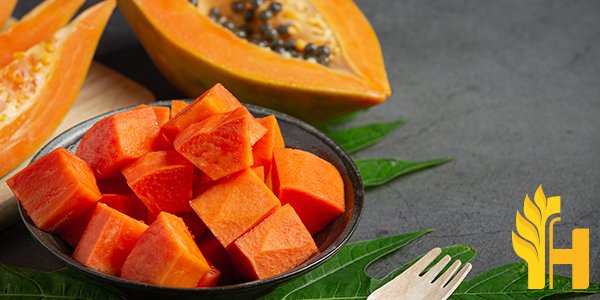Papaja price

Where to buy and sell Papaja, lowest (cheapest) and highest price.
check offers buy sell PapajaToday price for PapajaPapaja wholesale prices 2022
The Current commodity price of Papaja per kg, pound in the world in the global markets
papaya (پپیتا)
Price range: 36000 - 37000 PKR / 100 kg | Market: Chak Jhumra Market | Date: 2024-10-24
papaya (پپیتا)
Price range: 36000 - 37000 PKR / 100 kg | Market: Chak Jhumra Market | Date: 2024-10-23
papaya (پپیتا)
Price range: 36000 - 37000 PKR / 100 kg | Market: Chak Jhumra Market | Date: 2024-10-22
papaya (پپیتا)
Price range: 36000 - 37000 PKR / 100 kg | Market: Chak Jhumra Market | Date: 2024-10-21
papaya (پپیتا)
Price range: 36000 - 37000 PKR / 100 kg | Market: Chak Jhumra Market | Date: 2024-10-20
papaya (پپیتا)
Price range: 36000 - 37000 PKR / 100 kg | Market: Chak Jhumra Market | Date: 2024-10-19
papaya (پپیتا)
Price range: 36000 - 37000 PKR / 100 kg | Market: Chak Jhumra Market | Date: 2024-10-18
papaya (پپیتا)
Price range: 23000 - 24000 PKR / 100 kg | Market: Chak Jhumra Market | Date: 2024-10-03
papaya (پپیتا)
Price range: 23000 - 24000 PKR / 100 kg | Market: Chak Jhumra Market | Date: 2024-10-02
papaya (پپیتا)
Price range: 23000 - 24000 PKR / 100 kg | Market: Chak Jhumra Market | Date: 2024-10-01
Papaja
Papaja fruit is an excellent source of vitamin C. It also contains a good amount of fiber and potassium. It is a tropical fruit that is native to Central America, and it is now grown in many other parts of the world. The papaya fruit has a sweet, musky taste and a soft, juicy texture. It is rich in antioxidants, vitamins, and minerals, and it is a good source of fiber. The papaya fruit is also known for its health benefits, which include aiding in digestion, boosting immunity, and reducing inflammation. Papaja fruit has a high water content and is low in calories, making it a great food for people who are trying to lose weight or maintain a healthy weight. Additionally, papaja fruit is a good source of antioxidants and has anti-inflammatory properties. Papaja is a tropical fruit that is grown in many parts of the world. It has sweet, juicy flesh and hard skin. Papaja is a good source of dietary fiber, vitamin C, and vitamin A. It can be eaten fresh or used in smoothies, juices, and other recipes. Papaya is a tropical fruit that is rich in vitamins, minerals, and antioxidants. It has been linked to several health benefits, including improved digestion, reduced inflammation, and enhanced cardiovascular health. Papaya is also a good source of fiber and carotenoids, which are nutrients that can help protect against certain types of cancer. Papaja fruit is a delicious, nutritious, and versatile addition to any diet. Prized for its sweet, creamy flesh and often used in smoothies and juices, papaya is also a fantastic ingredient in salads and desserts. Papaya is a good source of dietary fiber, vitamin C, vitamin A, and potassium. It is also low in calories and fat. Papaya can be enjoyed fresh, canned, or dried. It can also be made into preserves, jams, and chutneys. Papaya is a popular ingredient in many Caribbean dishes. When selecting papaya, look for fruit that is soft to the touch and has a deep yellow or orange color. Avoid papaya with bruises or cuts. Papaya is a seasonal fruit and is available from late spring through early fall. The papaya fruit is a delicious and nutritious snack that is enjoyed by people all over the world.Global papaja (Carica papaya) production
Papaja (Carica papaya) is an indigenous fruit of the Americas, but it is now cultivated in tropical regions around the world. The global production of papaja was estimated to be about 18 million tonnes in 2016. The majority of papaja production takes place in Brazil, followed by India and China. Papaja is a nutritious fruit that is high in vitamins and minerals, making it an excellent addition to any diet. The flesh of the papaja fruit is often eaten fresh, while the seeds can be used to make a spicy condiment. Papaja is also a popular ingredient in many processed foods, such as juices, jams, and ice cream. Papaja production has increased in recent years due to the growing demand for fruit. However, the papaja industry faces challenges, such as pests and diseases, which can lead to crop losses. In addition, climate change is expected to impact papaja production in the future. Despite these challenges, papaja remains a popular fruit and an important part of the global food supply. With proper management, the papaja industry is expected to continue to grow in the future.Download our new
Husfarm App
Stay up to date with the current prieces of agricultural products all over the world.
Do you want to sell agricultural products?
Are you an Agricultural processor looking for high-quality products to buy?
Post an ad for FREE!
